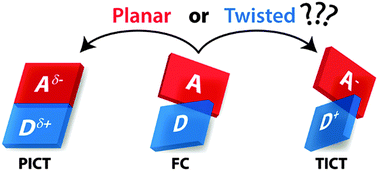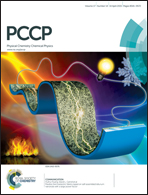The driving forces for twisted or planar intramolecular charge transfer†
Abstract
A D–A (donor–acceptor)-type chromophore may twist or flatten in its excited state to form a TICT (twisted intramolecular charge transfer) state or a PICT (planar intramolecular charge transfer) state, respectively. What is the driving force behind this twisting or planarization? Which geometry will occur for a certain D–A chromophore? To answer these questions, both fragment orbital interaction and excited state energy decomposition analyses were performed on several classical TICT/PICT molecules. Three driving forces were identified, namely, energy gap, hole–electron interactions, and excited state relaxation. The contributions of these driving forces in various types of molecules were analyzed to determine how the molecular structure affects them. The energy gap difference between the twisted and planar geometries was found to play a decisive role in most situations. Thus, evaluating the frontier orbital interactions between the donor and acceptor effectively predicts whether chromophores planarize or twist in the excited state.


 Please wait while we load your content...
Please wait while we load your content...